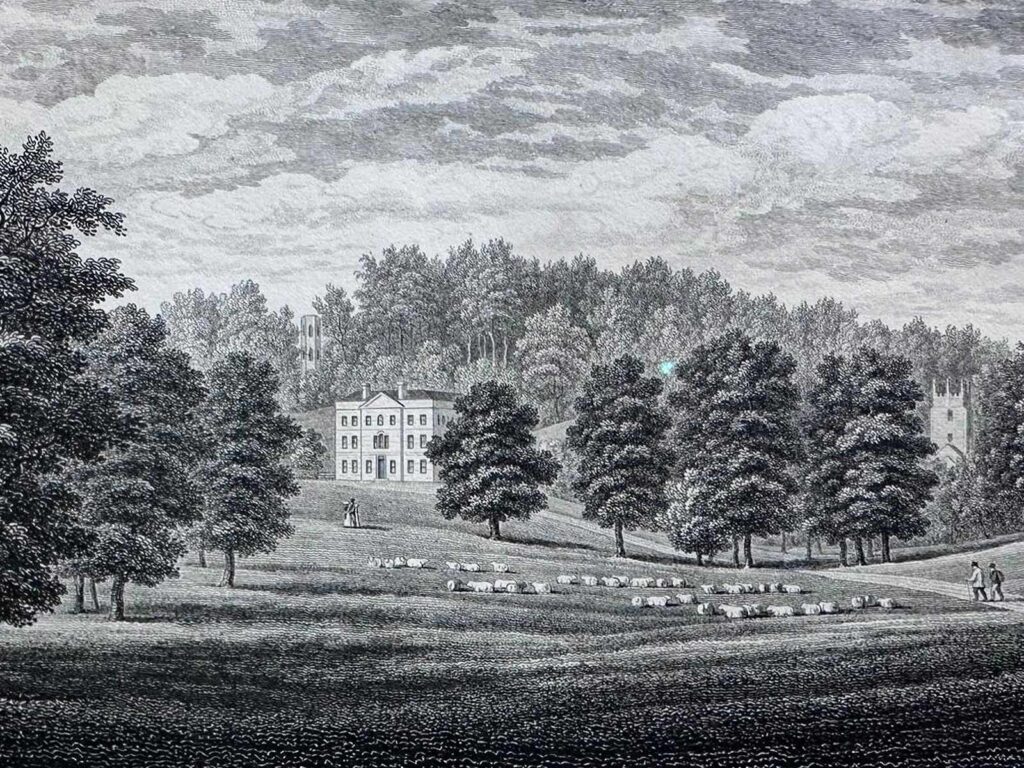History
For nearly a millennium, Gatcombe has been home to a manor and estate, originally bestowed upon William son of Stur as recorded in the Domesday Book. A rare map in the Harvard Library depicts the earlier Tudor gabled mansion, situated closer to
St. Olave’s Church, which predates the existing house.
In 1566 and 1576, John Worsley acquired the two halves of Gatcombe manor, uniting them into a single estate. His descendants, including Sir Edward Worsley—a Royalist who aided Charles I during his escape in 1647—occupied the estate for generations. Charles I is said to have hidden in the nearby hanging woods to the west of the house.
The current Georgian house was built in 1751 by Sir Edward Worsley, brother of Sir Richard Worsley, Bt., who expanded the family seat at Appuldurcombe. Gatcombe House was relocated further from St. Olave’s, with parklands designed in the English Landscape style. A lake and elegant stone bridge, which was larger in its original form, guided visitors with picturesque views of the house. Historic prints suggest the lake was once located east of the bridge, unlike today. The estate also featured a folly and a large ice house.

In the early 1800s, Colonel Campbell of Ardchattan, through marriage to Jane Meux Worsley, enhanced the estate with extensive landscaping and the planting of specimen trees, fruits, and plants, though at great financial cost.
During the 19th century, Gatcombe changed hands several times but eventually became home to families deeply connected to the Isle of Wight, including the Seelys, Hobarts, and Scotts. Over the past century, the estate has played a significant social role on the island, hosting notable figures such as Rudyard Kipling, the King of Spain, and Princess Margaret.
